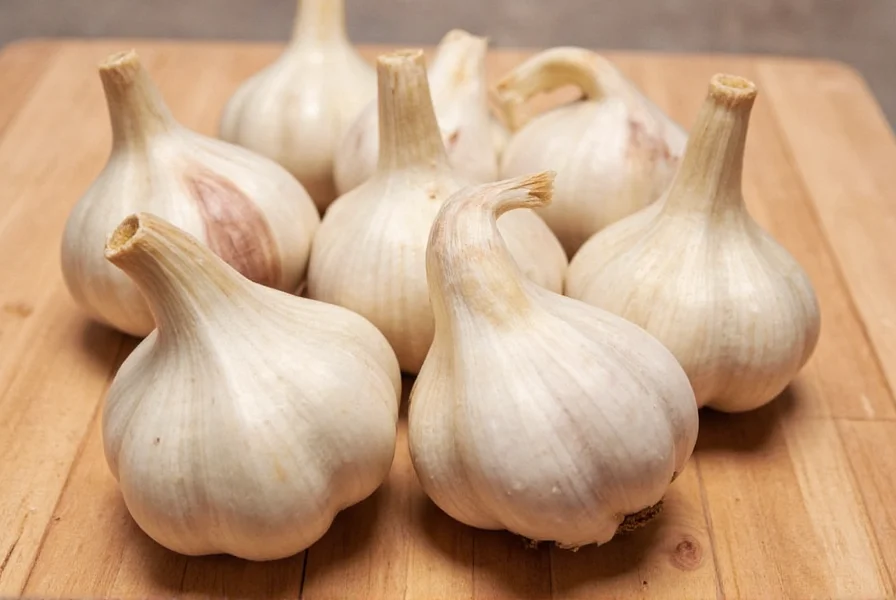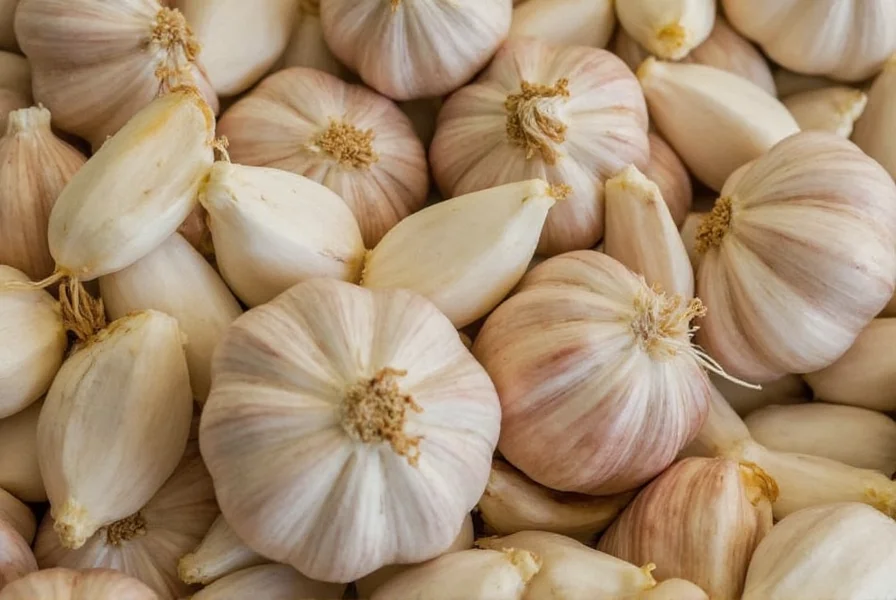Garlic cloves form the essential building blocks of culinary garlic, providing that distinctive pungent flavor and aroma that enhances countless dishes worldwide. Understanding these fundamental units helps home cooks and professional chefs alike achieve better results in the kitchen.
What Exactly Is a Garlic Clove?
A garlic clove represents one individual segment within a garlic bulb. Each clove consists of:
- A protective papery outer skin (tunic)
- Firm, white to off-white flesh beneath the skin
- A flat basal plate at the bottom where it connected to the bulb
- A pointed tip at the top
When separated from the bulb, cloves maintain their distinct teardrop shape. The size varies considerably depending on garlic variety and growing conditions, with some specialty varieties producing dramatically larger individual cloves.

How Many Cloves Typically Appear in a Garlic Bulb?
The number of cloves per bulb depends primarily on garlic type:
| Garlic Type | Average Cloves Per Bulb | Size Characteristics |
|---|---|---|
| Softneck Garlic | 15-20 | Smaller individual cloves, multiple layers |
| Hardneck Garlic | 8-12 | Larger individual cloves, single layer |
| Elephant Garlic | 4-6 | Very large individual cloves |
Softneck varieties, commonly found in supermarkets, typically contain more numerous but smaller cloves. Hardneck varieties, often available at farmers markets, feature fewer but substantially larger cloves with more complex flavor profiles. The popular 'Rocambole' hardneck type usually delivers 8-12 plump cloves per bulb.
Understanding Garlic Clove Sizes and Measurements
Culinary recipes often specify 'one garlic clove' without clarifying size, creating confusion for cooks. Standard classifications include:
- Small cloves: Approximately 1/2 inch long, yields about 1/2 teaspoon minced
- Medium cloves: Around 3/4 inch long, yields about 1 teaspoon minced
- Large cloves: 1 inch or longer, yields 1.5-2 teaspoons minced
When precision matters in recipes, particularly in baking or delicate sauces, consider these conversions:
- 1 medium garlic clove = 1/2 teaspoon minced garlic
- 1 medium garlic clove = 1/8 teaspoon garlic powder
- 1 medium garlic clove = 1/2 teaspoon garlic paste
Practical Tips for Working With Garlic Cloves
Maximize your garlic experience with these professional techniques:
Effortless Peeling Methods
Place the clove on a cutting board, lay the flat side of a chef's knife over it, and give a firm tap with your palm. The skin will separate easily from the clove. Alternatively, shaking cloves in a sealed container for 30 seconds loosens skins significantly.
Optimal Storage Practices
Store whole garlic bulbs in a cool, dark, well-ventilated place. Once separated, individual cloves remain fresh for 7-10 days at room temperature. For extended storage, place cloves in an airtight container in the refrigerator for up to 3 weeks. Never store garlic in oil at room temperature due to botulism risk.
Why Fresh Garlic Cloves Outperform Pre-Prepared Alternatives
Fresh garlic cloves contain allicin, the compound responsible for garlic's distinctive flavor and health benefits, which forms only when cloves are cut or crushed. This enzymatic reaction doesn't occur in pre-minced products, which often contain preservatives that alter both flavor and nutritional profile.
Studies show fresh garlic delivers significantly higher antioxidant activity compared to jarred alternatives. The complex flavor profile of freshly prepared garlic simply cannot be replicated by pre-processed options, making the extra preparation time worthwhile for discerning cooks.
Common Questions About Garlic Cloves
How can I tell if a garlic clove has gone bad?
Signs of spoiled garlic cloves include brown spots, green sprouts emerging from the center, soft or mushy texture, and unpleasant odor. Fresh cloves should feel firm when squeezed and have dry, papery skin without significant discoloration.
Can I substitute garlic powder for fresh garlic cloves?
Yes, but with important considerations. Use 1/8 teaspoon garlic powder to replace one medium fresh garlic clove. Remember that garlic powder lacks the complexity and enzymatic benefits of fresh garlic, so adjust quantities based on your recipe's requirements and personal taste preferences.
Why do some garlic cloves sprout green shoots?
Green sprouts indicate the garlic clove is attempting to grow. While still safe to eat, sprouted cloves develop a slightly bitter flavor. Simply cut the clove in half lengthwise and remove the green sprout before using. To prevent sprouting, store garlic in a cool, dark place with good air circulation.
How does roasting affect garlic cloves?
Roasting transforms garlic cloves, converting their sharp, pungent flavor into a sweet, nutty, caramelized delight. Whole cloves roasted at 375°F (190°C) for 15-20 minutes become soft and spreadable. This process reduces allicin content but creates different beneficial compounds, offering both culinary versatility and health benefits.
What's the difference between hardneck and softneck garlic cloves?
Hardneck garlic produces fewer (8-12), larger cloves arranged in a single circle around a hard central stem. They offer more complex flavors but store for a shorter period (6-8 months). Softneck varieties contain more numerous (15-20), smaller cloves in multiple layers with no hard stem, making them better for braiding and longer storage (9-12 months).











 浙公网安备
33010002000092号
浙公网安备
33010002000092号 浙B2-20120091-4
浙B2-20120091-4